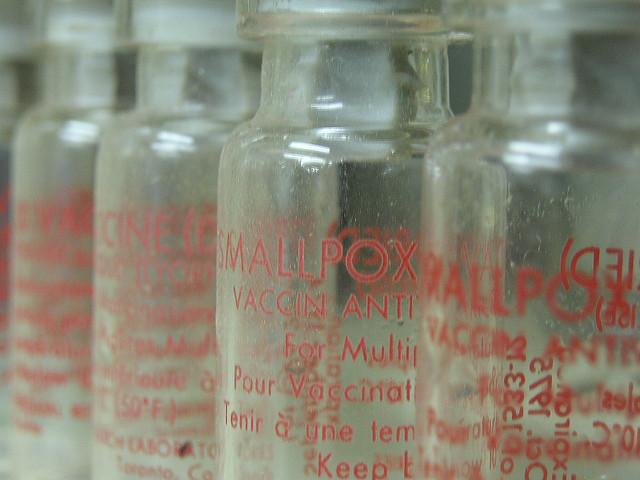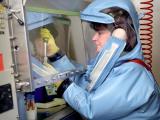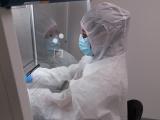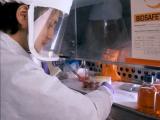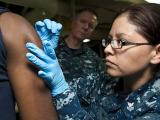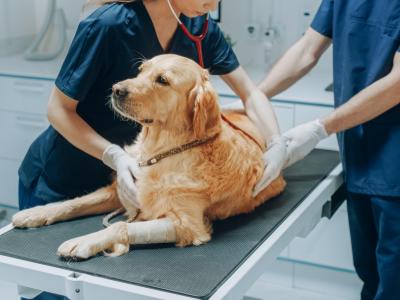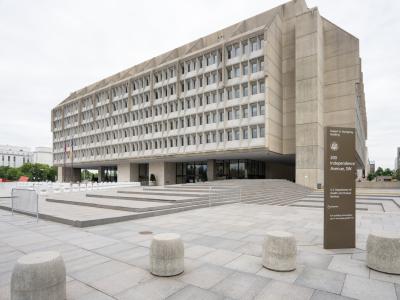How smallpox samples ended up in a cold-storage room on the National Institutes of Health (NIH) campus where they were overlooked for more than four decades and who brought them there are still a mystery, according to findings released today from an independent blue ribbon committee tasked by the NIH with reviewing the incident and related oversight policies.
However, the review uncovered a set of problems that led up to the event, as well as recommendations to prevent lab samples from going off the oversight radar.
In August 2016, the NIH-appointed the seven-person blue ribbon panel to investigate the July 2014 discovery of 6 smallpox samples in an abandoned group of 300 lab samples that were in an unsecured Food and Drug Administration (FDA) cold-storage room during preparations for a move to the FDA's main campus. The event was one of several biosafety lapses that came to light in 2014.
The panel, headed by Kenneth Bernard, MD, former special assistant to the president's Homeland Security Council, is a working group of an NIH advisory group, the National Science Advisory Board for Biosecurity (NSABB). The review followed a joint investigation by the Federal Bureau of Investigation (FBI) and the Centers for Disease Control and Prevention (CDC), the Government Accountability Office (GAO), Congress, and the FDA. The panel reviewed those findings, examined federal policies, visited sites on the NIH campus, and analyzed the NIH's response to the incident.
The panel highlighted eight factors that contributed to the incident and made several recommendations on how the NIH can shore up gaps in biosafety policies and procedures.
One of the group's key observations is that the incident shows how important it is to continually assess biosecurity practices. "As other infectious diseases are eradicated or controlled in the future, similar situations to the events of 2014 may arise — for example, with polio virus, which is currently close to eradication," they wrote.
They also found that the response to the incident was appropriate and thorough, with excellent interagency cooperation to handle "a highly unusual situation."
Policy problems, missteps after samples were found
One of the problems that led to the improper storage and overlooked samples was that several investigators used the room over the years, but neither NIH nor FDA had policies in place that assigned responsibility for the space and its contents to any one individual.
Another lapse was failure in the 1980s to find all variola samples, part of an international agreement in the wake of eradication that led to the destruction of all smallpox samples except for ones at two research labs, one at the CDC and the other in Russia. The panel said federal scientists again missed the chance to uncover the samples in 2003 when new select agent rules took effect.
Regarding federal policies, the panel said prior to the 2014 event, authorities had a pattern of responding to similar lab sample incidents as they occurred, rather than looking at potential systemic problems. Before 2014, government scientists lacked a complete and regular way to inventory select agents and didn't have a policy for handling abandoned materials.
Another contributing factor was the lack of a clear policy about cardboard in cold rooms, which could pose a mold threat if the material became wet. The lab inspection checklist included cardboard, but it didn't distinguish what was acceptable or unacceptable. A clear policy might have identified the samples sooner, the panel said.
The panel also identified problems with how the samples were documented and handled after they were found in July 2014. No written record was made to document the event and the samples weren't secure at all times, partly because policies regarding chain-of-custody and time logs weren't clear. Specifically, the team found that the samples in their original boxes were placed in a larger cardboard box and hand-carried to a secure NIH lab.
"No negative consequences occurred—there were no infections or injuries—but packaging and transport of the samples were conducted in ways that presented both biosafety and security risks," they wrote.
Recommendations urge clear accountability, federal policy follow-up
Several of the group's recommendations directly relate to specific findings, such as finish an ongoing space audit to ensure that oversight of research materials is assigned to individuals by name and updated when personnel changes and having clearly written agreements when research space is shared.
Regarding general biosecurity and biosafety at NIH, the team recommended complete implementation of current policies and that leaders cultivate a culture of safety and responsibility. They encouraged federal officials to push for consistent policies across all government agencies and to coordinate response coordination with federal agencies outside the department of Health and Human Services, including the FBI and Environmental Protection Agency.
See also:
Blue Ribbon Panel review on 2014 smallpox virus incident on NIH campus
